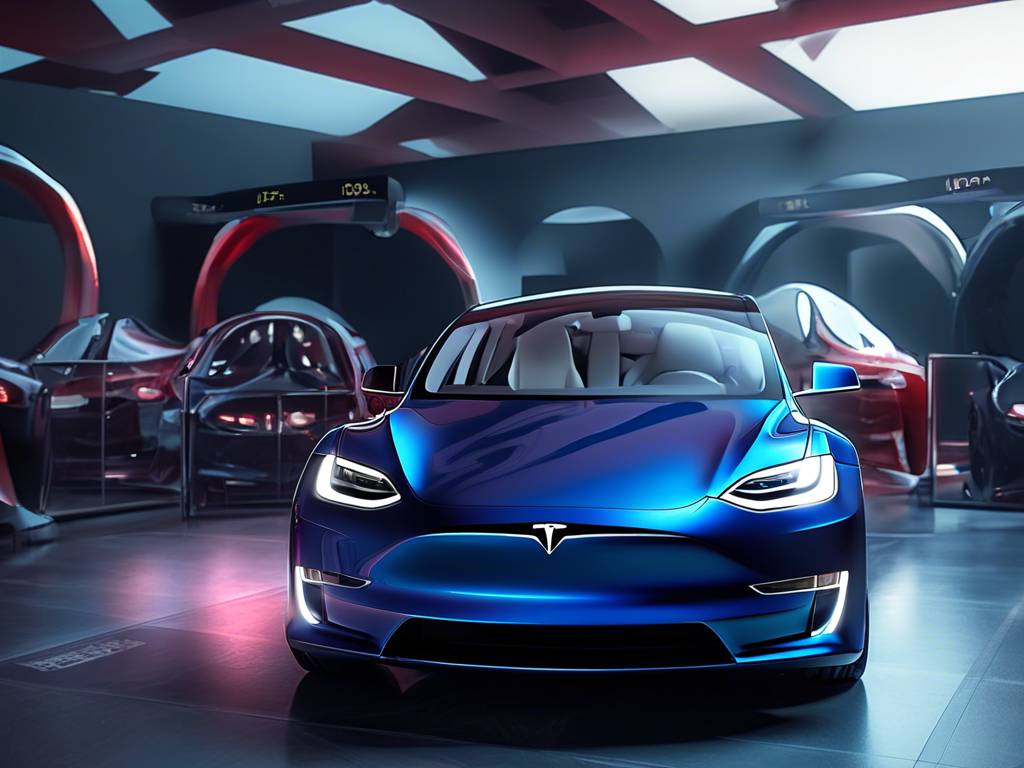Tesla’s Rough Start in Q1: Analyst Insight
Analysts are turning bearish on Tesla (TSLA) as the company reported disappointing first-quarter delivery numbers. Gugenheim reiterated its sell rating on the stock and lowered the price target to $122, down from $132. Ronald Yepo, the Gugenheim Securities director of Automotive Equity Research, sheds light on the factors contributing to the decline in Tesla’s performance. Let’s delve into Ronald’s analysis to gain a better understanding of the situation.
Factors Driving Tesla’s Q1 Performance
Ronald Yepo highlights the following key factors influencing Tesla’s performance:
- The delivery downside in Q1 is primarily driven by a demand, not a supply issue.
- While supply issues existed for the Model 3 in the US, the majority of the decline in this quarter was due to a decrease in demand.
- US vehicle orders dropped by approximately 20 to 25% compared to previous periods.
- Multiple challenges are impacting Tesla’s performance across different regions.
- US EV demand is slowing down, with increasing competition from Chinese rivals like BD, Xiaomi, and Huawei.
- European markets have shown stagnant growth for Tesla for several consecutive quarters.
Concerns for Tesla in China
Regarding Tesla’s outlook in China, Ronald expresses concerns about the growing competition in the market:
- Byd’s entry into the market has posed a significant challenge for Tesla, especially in terms of pricing and competition.
- Huawei and Xiaomi are emerging as strong competitors, offering similar products at competitive price points.
- The introduction of Xiaomi’s S7 vehicle in China presents a serious competitive threat to Tesla’s Model 3.
Future Challenges and Investments for Tesla
Ronald discusses the potential challenges and investment strategies for Tesla in the evolving EV market:
- As the EV market becomes more competitive, Tesla may need to strategize its investments to stay ahead.
- The rumored Indian factory may not be a necessity in the near future, considering the current supply-demand dynamics.
- Investments in technologies like Full Self-Driving (FSD) could influence Tesla’s future performance, but the uptake may be gradual.
Potential Upside Risks for Tesla
While the near-term outlook for Tesla remains challenging, Ronald identifies a potential upside risk for the company:
- The Full Self-Driving (FSD) trial could lead to increased adoption rates and positively impact Tesla’s narrative in the market.
- However, Ronald cautions that the expansion of FSD take rates may be modest due to cost considerations and consumer preferences.
Hot Take: Navigating the EV Landscape
In conclusion, Tesla faces various challenges in the EV market, from declining demand to increased competition. While uncertainties linger, strategic investments in technologies like FSD could potentially offer a silver lining for the company. As the EV landscape evolves, Tesla must adapt and innovate to maintain its competitive edge and navigate the road ahead successfully.





 By
By
 By
By
 By
By


 By
By